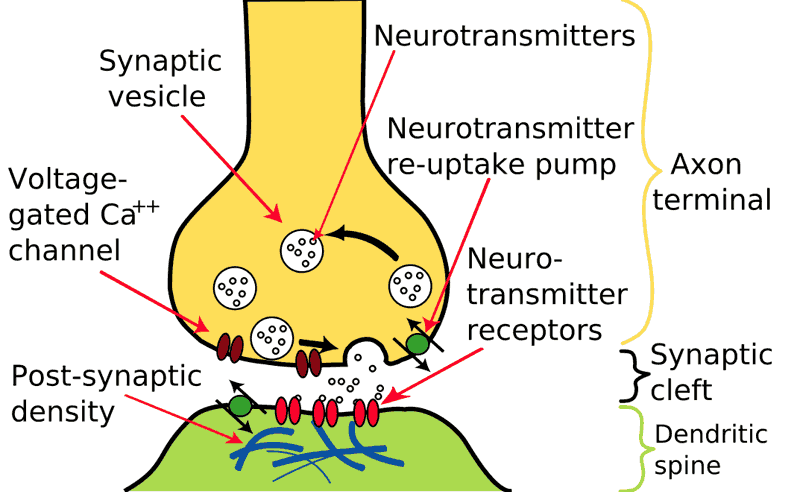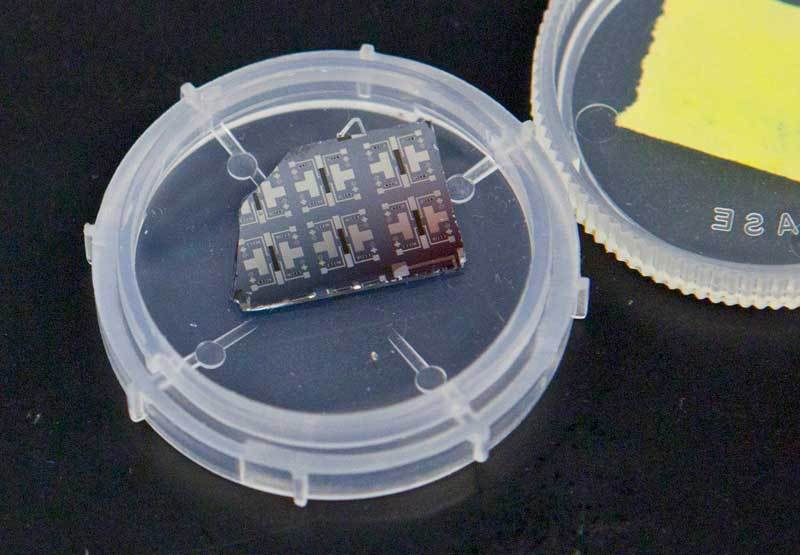Nickelate synaptic transistors could improve parallel computing
 Materials scientists at the Harvard School of Engineering and Applied Sciences (SEAS) have created a new type of transistor that mimics the behavior of a synapse. The synaptic transistor simultaneously modulates the flow of information in a circuit and physically adapts to changing signals. The technology could lead to creation of a new kind of artificial intelligence which is embedded in the very architecture of a computer rather than software.
Materials scientists at the Harvard School of Engineering and Applied Sciences (SEAS) have created a new type of transistor that mimics the behavior of a synapse. The synaptic transistor simultaneously modulates the flow of information in a circuit and physically adapts to changing signals. The technology could lead to creation of a new kind of artificial intelligence which is embedded in the very architecture of a computer rather than software.
“The transistor we’ve demonstrated is really an analog to the synapse in our brains”, said Jian Shi, a postdoctoral fellow at SEAS. “Each time a neuron initiates an action and another neuron reacts, the synapse between them increases the strength of its connection. And the faster the neurons spike each time, the stronger the synaptic connection. Essentially, it memorizes the action between the neurons.”
How does a synaptic transistor function?
The change in artificial synapse occurs with the change in plasticity of oxygen ions, similarly to the way calcium ions effect receptors in a biological synapse. When a voltage is applied, these ions slip in and out of the crystal lattice of an 80-nanometer thin film of samarium nickelate, which acts as the synapse channel between two platinum “axon” and “dendrite” terminals.
The varying concentration of ions in thin film raises or lowers its conductance – the ability to carry information on an electrical current. This enables it to vary the strength of the connection depends on the time delay in the electrical signal, just like a natural synapse. The synaptic transistor isn’t restricted to the binary system of ones and zeros, so it offers several advantages over traditional silicon transistors. Another advantage is the fact it has non-volatile memory, which means it remembers its state even when power is interrupted.
How did they create nickelate synaptic transistor?
The entire device, just a few hundred microns long, is embedded in a silicon chip. It consists of the nickelate semiconductor sandwiched between two platinum electrodes and adjacent to a small pocket of ionic liquid. An external circuit multiplexer converts the time delay into a magnitude of voltage which it applies to the ionic liquid, creating an electric field that either drives ions into the nickelate or removes them.
Nickelate belongs to correlated electron systems, an unusual class of materials that can undergo an insulator-metal transition when exposed to stimuli. When exposed to an external field, the conductance of the material changes. That makes it very energy efficient, since the input energy required to drive this switching is very small.
SEAS researchers demonstrated that the ‘learning’ behavior of the device isn’t sensitive to temperatures ranging from about room temperature to 160°C (320°F).
What are the hurdles left to overcome?
Although nickelate system is suitable for seamless integration into existing silicon-based systems, the limitations relate to the challenges of synthesizing a relatively unexplored material system, and the fact the size of the device affects its speed. According to researchers, the problem related to speed will be solved by confining the liquid and positioning the gate electrode closer to it.
“You have to build new instrumentation to be able to synthesize these new materials, but once you’re able to do that, you really have a completely new material system whose properties are virtually unexplored”, said Shriram Ramanathan, principal investigator and associate professor of materials science at Harvard SEAS. “It’s very exciting to have such materials to work with, where very little is known about them and you have an opportunity to build knowledge from scratch.”
The researchers are teaming up with microfluidics experts at SEAS, to investigate the possibilities and limits for this fluidic transistor. Aside changing the way we could develop artificial intelligence, the synaptic transistors could be used to create artificial biological circuits as well as to improve parallel computing.
For more information, read the paper published in Nature Communications: “A correlated nickelate synaptic transistor”.











Leave your response!